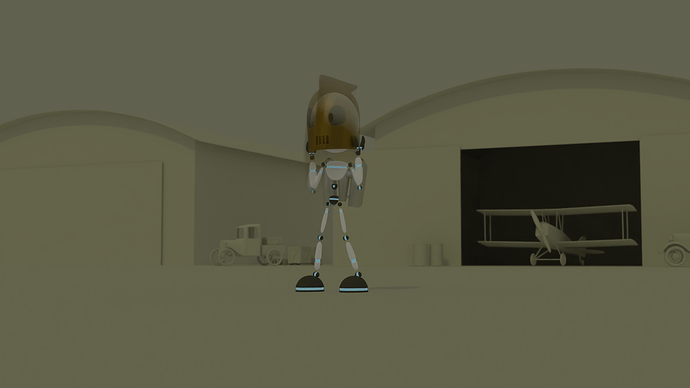Hi all!
I’m experiencing a problem when rendering an animation using motion blur and the child of constraint. On frame 41, my character’s helmet child of constraint for the hand is set to 1. On frame 42, the helmet’s child of constraint for the hand is set to 0, and another child of constraint for the character’s head is set to 1. Here’s the result:
Frame 42 looks the same, with the head visible thru parts of the helmet. Frames 40 & 43 are fine. Motion Blur Shutter value is 1, with Motion Blur Shutter set to 0.1, it renders fine, without the head showing thru.
Any ideas how to overcome this problem without manually rendering those 2 frames with a lower Motion Blue Shutter value?
Thanks,
Randy
1 Like
I can’t say I have a solution, only more information…
I’ve been running into the same issue myself. I have an object with two child of constraints that I’m trying to switch parenting for between two different empties, which I’m using as animation controls. I get the same blur right on the frame that I set the influence to zero.
The thing that I noticed is that when I turn on subframes so that I can see the exact movements between my two adjacent keyframes, the object moves back to some original position way off of where I have it keyed and then back to my keyed position for the next frame. The result is that even though there is no perceived movement between the two keyframes in the final render, motion blur thinks there is because the object is rapidly moving out and back in the subframes.
There’s probably a simple solution to this problem…I just don’t have it.
Good luck
Hello and welcome aboard!
My fix for my problem was in the Render Properties → Motion Blur → Shutter field (default is set to .5) adjust that value to 0.1. Then I set the start frame to 41, and end frame to 42, then rendered the animation. The 2 problem frames were rendered correctly and saved over the problem renders.
Here’s the deal on that. When an object has a child of constraint on it, it appears to move with the object the constraint targets. Thing is, it doesn’t actually move, it appears to move because it’s constrained to move. So in my case, frame 41, the helmet is constrained to the hand, on frame 42, the helmet is constrained to head. In between frame 41 & 42, both constraints influences are at .5 and that’s why you see the movement.
I read this thread the other day and @carterbk explains how motion blur works, and how to work around it.
So in my case, at frame 41, the helmet should be constrained to the hand, by frame 41.5, the helmet should be constrained to the head. So the switching of constraints happens before the frame range the motion blur looks at.
At the end of the day, it was easier just to render the 2 frames with reduced motion blur instead of adjusting keys spacing on subframes.
Hope this made sense!
Randy
Yeah that totally does make sense. Thanks for taking the time to reply!
